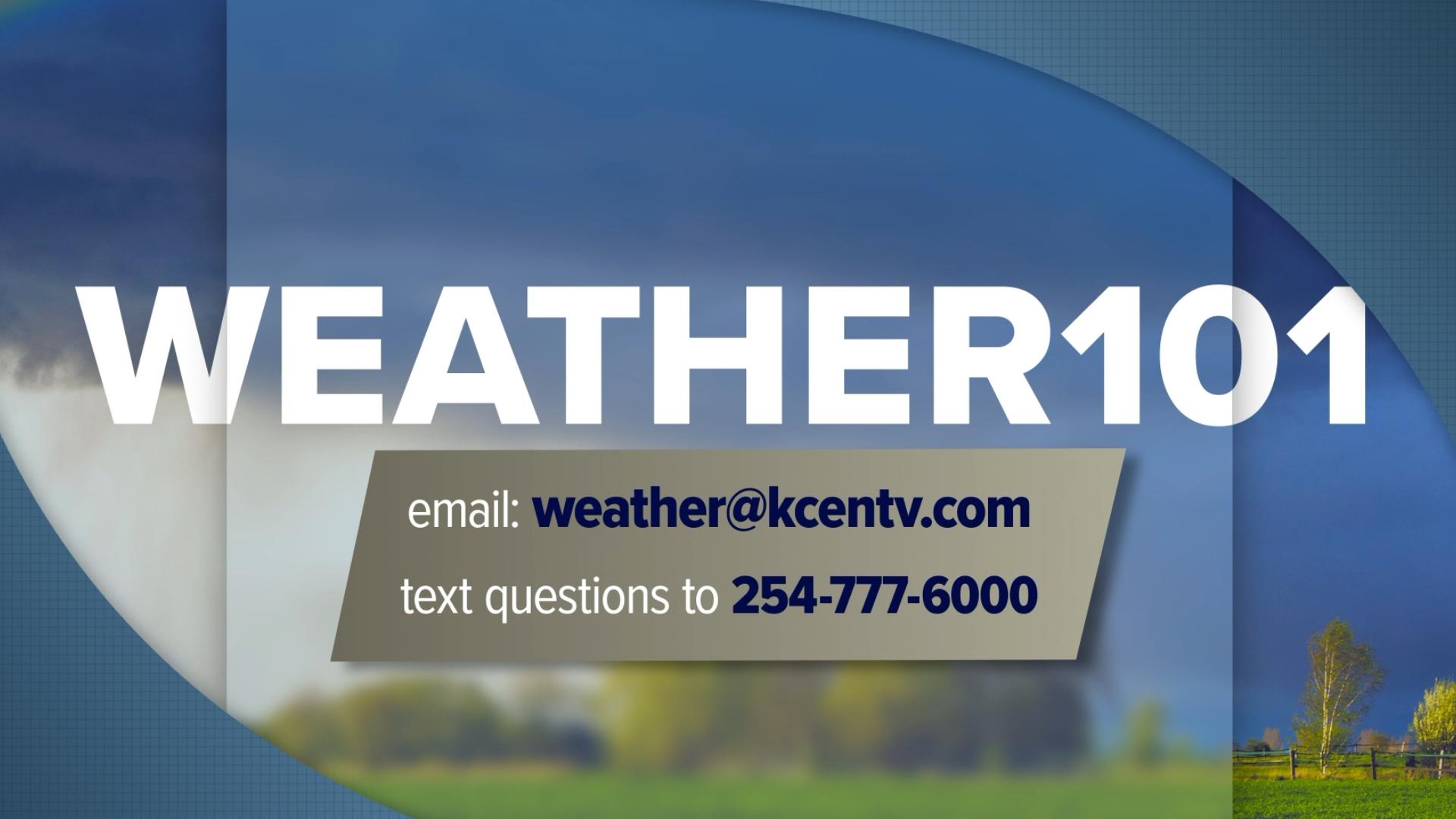TEMPLE, Texas — In this installment of Weather Impact 101, we’re doing something a little different.
Once each quarter, we’ll do a “Meteorology Grab-bag" where we take a few terms that we use frequently in our weathercasts and do a deeper dive on what they represent and how they can impact you.
For this grab-bag, we’ll be talking all about heat terminology, including “Excessive Heat Warnings”, “Heat Advisories,” heat exhaustion and heat stroke.
HEAT ADVISORIES
Let’s start with “Heat Advisories”. This is the lowest level of advisory issued by the National Weather Service (NWS) for heat safety.
Different NWS offices across the country have different criteria for what warrants a heat advisory. Here in Central Texas, our version of ‘heat’ differs a bit from what they might consider hot in Minnesota. Specifically, for Central Texas, a heat advisory will be issued if temperatures are forecast to be over 103° for two consecutive days, or if the heat INDEX is forecast to be over 105° for two consecutive days.
On these days it’s important to practice heat safety, including taking frequent breaks in the shade or air conditioning and staying hydrated during the heat of the day.
Heat Advisories are not uncommon here in Central Texas, due to the amount of moisture we typically have in the air during the summer. Our heat index values frequently climb up over 105° degrees in the middle of the summer.
EXCESSIVE HEAT WATCH/WARNING
Slightly less common is the issuance of an EXCESSIVE HEAT WATCH or EXCESSIVE HEAT WARNING.
According to the NWS in Fort Worth, Central Texas criteria for an Excessive Heat Warning include two consecutive days of 105° temperatures or a heat INDEX of 110° for two consecutive days.
These temperatures can be extremely dangerous, and outdoor activities are discouraged if avoidable.
On average, we may see 5-10 Excessive Heat products issued during the summer.
The difference between a watch and warning is also important.
In the case of an Excessive Heat Watch, the possibility of reaching criteria exists even if the forecast isn’t quite hot enough.
With a warning, the criteria are in the forecast and are expected to occur.
HEAT EXHAUSTION
Another term we use frequently during the hot weather season is HEAT EXHAUSTION. Heat exhaustion occurs anytime your body overheats. What causes you to overheat? Exposure to high temperatures, ESPECIALLY when the humidity is also elevated. Here in Central Texas, we can almost be guaranteed that some amount of humidity is going to be present during the summer months.
Symptoms of heat exhaustion include:
- Cool, moist skin with goose bumps when in the heat
- Heavy sweating
- Faintness
- Dizziness
- Fatigue
- Weak, rapid pulse
- Low blood pressure upon standing
- Muscle cramps
- Nausea
- Headache
If you experience heat exhaustion, you may not necessarily need to seek medical attention, but you SHOULD stop all activity, move to a cooler place and drink cool water.
HEAT STROKE
If you don’t exercise caution with heat exhaustion, it can turn into our last weather term for today: HEAT STROKE.
According to the Mayo Clinic, Heat stroke occurs if your internal temperature rises to 104° Fahrenheit. While Heat Exhaustion can be treated by drinking water and cooling off, heat stroke is a serious condition that requires medical attention. If left untreated, heat stroke can cause damage to your brain, heart, kidneys & muscles. The longer you wait, the more serious the complications can get. If left unchecked long enough, heat stroke can even be fatal.
Symptoms include:
- High body temperature
- Altered mental state or behavior
- Lack of sweat
- Nausea and vomiting
- Flushed skin
- Rapid breathing
- Racing heart rate
- Headache
If someone is suffering from any of those symptoms, call 911 immediately. While waiting for emergency care, move the overheated person to a cooler area, remove excess clothing and do whatever you can to lower their body temperature.
Here in Texas, we tend to take the hot weather for granted sometimes. We’re used to seeing streaks of 100° days in July and Aug. That doesn’t make it any less dangerous.
In hot-weather climates, it’s still important to remember that we’re all human and our bodies can overheat as well.
In our next installment, Meteorologist Avaionia Smith will be talking about how to stay safe on the playground during these Texas heat waves.
Remember, you can stream any of our Weather Impact 101 content on our YouTube channel or on the 6+ App.
More on KCENTV:
Read more on KCENTV.COM:

